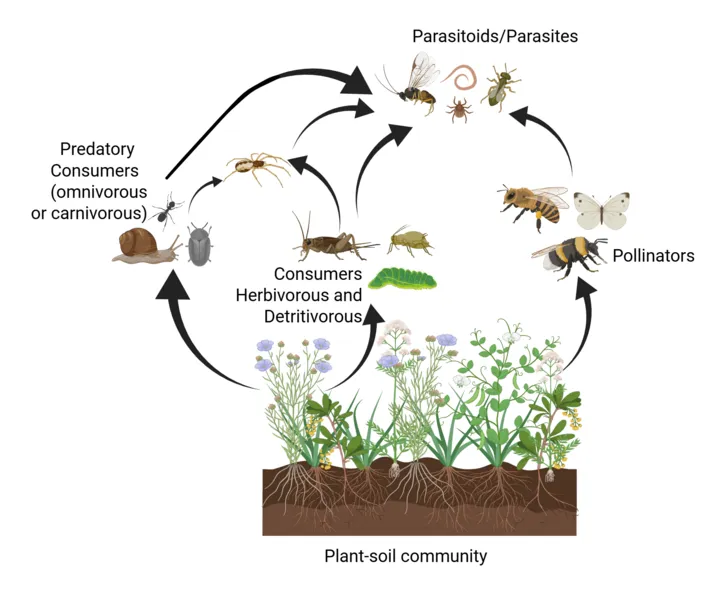Trophniche: Land-use effects on trophic niche variation across taxonomic groups and trophic levels of a food web
You are what you eat
Biodiversity is shaped by organismal differences in the consumption, utilization and allocation of nutrients as well as the environment they are immersed in. The trophic niche size represents the diversity and resources used; or in other words, the thresholds in nutrient absence and abundance tolerated by an organism. The goal of TrophNiche is to calculate the species-specific trophic niche of different taxonomic groups along the food web and to compare them in terms of size, positions, variation, and overlaps along the land use intensity gradient, primarily mowing, grazing, and fertilizer input. We do that through several approaches: 1) synthesis of existing data in collaboration with several other teams, 2) fieldwork to collect organisms under-represented in the synthesis, and 3) chemical (stable isotopes) and statistical analyses. Stable isotopes in food webs are non-radioactive forms of elements, like carbon (C) and nitrogen (N), that are incorporated into an organism's tissues through their diet. By analyzing the ratios of these isotopes in different organisms, we can follow the flow of energy and nutrients through the food web, revealing who eats whom. So we can reconstruct food webs even when we cannot see the actual predation events in the field. In that way, we aim to explore whether there are changes in the diet of the invertebrates along a land use gradient.
In collaboration with: Crop Physiology Lab
Responsible team members: Alejandra Parreno
Check out the project webpage: TrophNiche at the Biodiversity Exploratories
Follow us on iNaturalist: @TrophNiche
